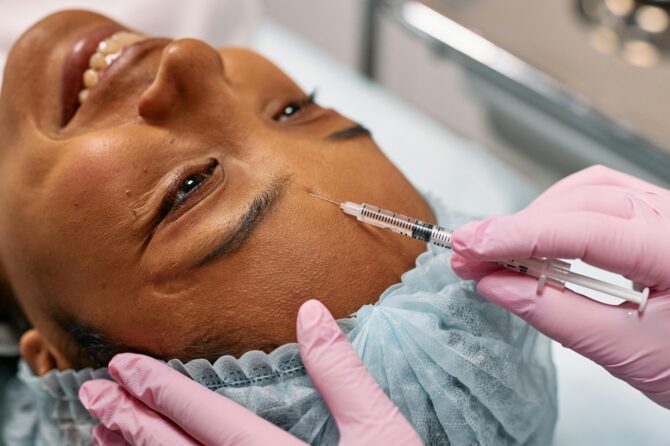
Botox’s Surprising Influence on Mood and Sex
Neuromodulator injections like Botox have become a cornerstone of modern aesthetic treatments for reducing facial wrinkles. These injections act to weaken specifically targeted facial muscles, reducing the appearance of facial lines over time and providing a more youthful appearance. Yet beneath the surface of these physical changes lies an intriguing psychological change that extends beyond mere aesthetics.
The psychological effects of Botox treatments have garnered increasing attention, particularly its impact on mood. The most well-studied phenomenon relates to treatments for “frown lines,” where patients have a reduced ability to frown even if they are unhappy. These patients report not only a softer, happier appearance but also that they are perceived by others to appear happier than before treatment. Prior research has shown that this physical change also leads to significant reductions in symptoms of depression.1
The mood enhancement that may occur with Botox treatments can be in part explained by the facial feedback hypothesis, which suggests that forming a facial expression strengthens the internal feeling of that expression.2 Smiling when you’re happy will make you feel happier and furrowing your brow when you’re angry will make you feel angrier. Patients who undergo Botox treatment targeting the corrugator and procerus muscles (common culprits that trigger frown line) experience a diminished ability to frown. As a result, they avoid the negative feedback typically linked to the emotions conveyed by frowning like sadness or disapproval.
And while Botox’s psychological effects are largely positive, emerging research highlights potential unintended psychological consequences—particularly in the realm of sexual intimacy.
Orgasmic dysfunction has been reported to affect between 16 to 25 percent of women, and recent studies suggest that facial expressions during sexual activity play a more significant role in the quality or ease of achieving orgasm than previously understood.3
Few previous research studies have demonstrated consistent themes in involuntary facial actions associated with orgasm. Master and Johnson studied the facial behavior of 10,000 sexual interactions and found a recurring pattern: frowning occurring in the plateau phase of intercourse (the sexual excitement prior to achieving orgasm). These expressions may serve multiple evolutionary purposes, such as enhancing communication, rewarding a partner, or fine-tuning synchronization during intimacy. More importantly, applying the facial feedback hypothesis to sexual excitement suggests that frowning not only reflects arousal but actively supports and enhances it.
So, can Botox aimed at diminishing your frown lines have the unintended consequence of diminishing sexual satisfaction?
Researchers evaluated 24 women who received Botox treatments and 12 untreated controls using the Female Sexual Function Index (FSFI), a questionnaire that includes 19 questions related to six domains of sexual function: desire, arousal, lubrication, orgasm, satisfaction, and pain.
The findings were striking: Botox-treated participants reported reduced sexual function compared to those who did not undergo treatment, particularly in achieving and enjoying orgasms. This supports the idea that facial expressions, including frowning, are not just byproducts of sexual pleasure but integral to the experience itself. These results raise important questions about how Botox affects intimate relationships. If facial expressions during sex serve as both a signal to partners and a self-reinforcing mechanism of pleasure, their suppression could have a ripple effect on relationship dynamics.
Nonetheless, it is important to acknowledge the limitations of this study. Self-reported measures of sexual function, while valuable, have inherent limitations. Further research involving diverse participant groups, real-time observational data, and partner perspectives will be crucial to better understand Botox’s full impact on intimacy. Moreover, the study’s focus included a small number of female participants without assessing men. While it has been shown that similar facial muscle groups are involved in the male orgasm, it is unclear if Botox treatments have similar implications for men.
As the drive to attain a youthful appearance continues to evolve, patients should remain mindful of the broader repercussions of cosmetic treatments. Botox may smooth wrinkles and lift spirits, but its effects on other aspects of life, such as intimacy and emotional expression, are certainly worth contemplating.
Read the blog on Psychology Today! Co-authored by the amazing Dr. Amir Hakimi.
References
1. Finzi E & Wasserman E. Treatment of depression with botulinum toxin: a case series. Dermal Surg 32, 645-650.
2. Buck R. Nonverbal behavior and the theory of emotion – the facial feedback hypothesis. J Press Soc Psychology 38, 811-824.
3. Lewis RW. Definitions/epidemiology/risk factors for sexual dysfunction. Journal of Sexual Medicine 7, 1598-1607.
